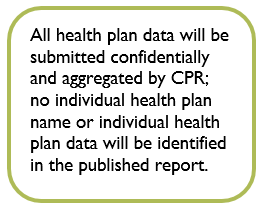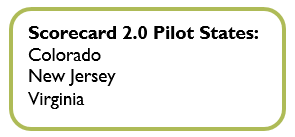PROFILE: Scorecard on Payment Reform
![]() Click here to listen to CPR’s Andrea Caballero chat with CIVHC’s CMO, Tamaan Osbourne-Roberts, about Scorecard 2.0.
Click here to listen to CPR’s Andrea Caballero chat with CIVHC’s CMO, Tamaan Osbourne-Roberts, about Scorecard 2.0.
Click here to listen to CPR’s Listening In podcast where Andréa Caballero dials up Jonathan Mathieu, VP of Research and Compliance & Chief Economist at the Center for Improving Value in Health Care (CIVHC). They discuss the provocative research using the Colorado All Payer Claims Database (APCD), and how the Scorecard on Payment Reform pilot is needed to support the claim that the Centennial state is ahead of the curve on the path towards a value-oriented health system.
 In 2009, a group of large employers founded Catalyst for Payment Reform (CPR) in order to provide dedicated attention to payment reform and its effects in the private sector. These employers hoped to help instigate a paradigm shift based on two core beliefs:
In 2009, a group of large employers founded Catalyst for Payment Reform (CPR) in order to provide dedicated attention to payment reform and its effects in the private sector. These employers hoped to help instigate a paradigm shift based on two core beliefs:
- The way we pay for health care in the U.S. needs to change from volume-based to value-based;
- Employers and other purchasers have a unique ability to use their leverage to push for big changes to the health care system.
Eight years later, CPR serves a variety of stakeholders with their focus population being large employers and other health care purchasers, like state employee benefit and state Medicaid agencies. CPR is a membership organization driven by three strategic goals:
- Effective Payment Reform: 20% of payments will flow through methods proven to improve value by 2020;
- Innovative Health Care Purchasers: Health care purchasers will become more educated and activated on the use of benefit designs, payment methods, and other tactics that support higher-value health care;
- Better Health Care Marketplace: Through greater visibility and competition, the health care marketplace will be more responsive to the needs of those who use and pay for health care.
Project Summary: Since 2013, CPR has released six Scorecards on Payment Reform, evaluating payment reform implementation at both the state and national levels. In 2017, they are expanding and enhancing the Scorecard into version 2.0. Like previous iterations, the new Scorecard relies on the voluntary participation of health plans to submit data on the amount of dollars they had flowing through different payment arrangements in both the commercial and Medicaid markets of each pilot state in a given year. For Scorecard 2.0, the data will be from 2016.
In addition to collecting data on payments made through various payment reform programs, CPR will also collect data on 13 macro-indicator metrics that are meant to signal if the sweeping changes to payment occurring in the health care system today correlate with improved patient outcomes and more affordable care. Because the health care system is so complex, the analysis is unable to identify causation, but rather look at correlations between changes in the economic signals that health plans are sending and measures of provider and health system performance.
Finally, CPR will supplement the quantitative findings from health plans and other sources with anonymized insights from interviews with approximately 15 health care leaders in each state. Weaving together the nuanced qualitative information with the quantitative data can inform health care policy and innovations in the public and private sectors.
Benefit to Colorado: National, regional, and state health plans have worked with CPR on previous Scorecards and have found the process to be beneficial to their strategic planning. Individual health plans can see how their payment reform efforts benchmark against the state aggregate, allowing them to strategically plan and define more informed goals. 
CIVHC was selected to be the local sponsor of the state-level pilot and will connect CPR to the right contacts, help navigate any obstacles that may arise, and assist in disseminating the results. Since CPR announced their goal of 20% of payments through methods proven to improve value, the industry has been in a self-described “arms race” to implement payment reform. The published report aims to provide a comprehensive bird’s eye view of the payment reform landscape in Colorado and can inform the efforts of all stakeholders working towards the health care Triple Aim.
